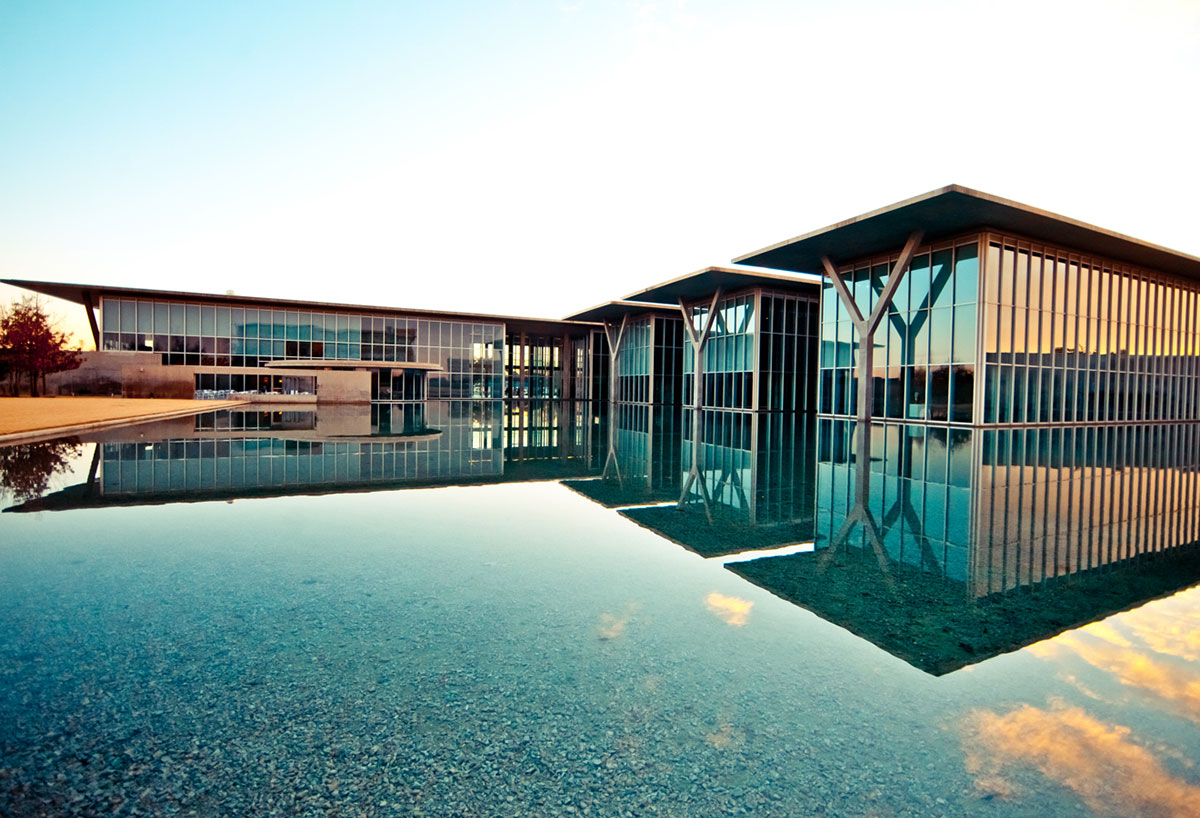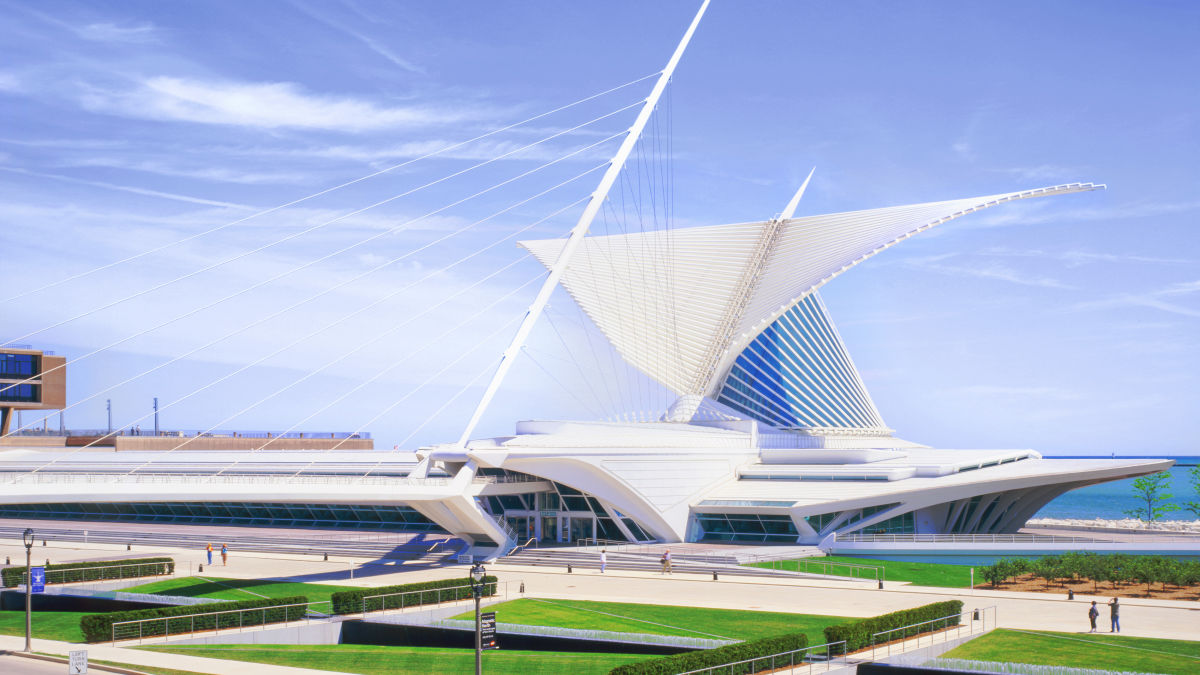Baltimore offers world-class museum experiences across art, history, science and culture. The city’s museums engage visitors through extensive collections paired with interactive exhibits telling compelling stories focused on regional innovations and influencers.
| Museum Name | Highlights |
|---|---|
| The Walters Art Museum | Over 37,000 pieces spanning 5,000 years of art. |
| Baltimore Museum of Art | Largest public art collection in the region with over 95,000 objects. |
| Reginald F. Lewis Museum | Focus on Maryland and national African American history and culture. |
| Port Discovery Children’s Museum | Interactive playgrounds for children on three floors. |
| The National Electronics Museum | Technology innovations from the past century. |
| Sports Legends Museum | Sports history with exhibits on local heroes and memorabilia. |
| The Star-Spangled Banner Flag House | Documents the flag’s origin story from the War of 1812. |
| The American Visionary Art Museum | Showcases outsider and intuitive art by self-taught individuals. |
| Edgar Allan Poe House and Museum | Focus on Poe’s life and works during his time in Baltimore. |
| The B&O Railroad Museum | American railroad history, including early locomotives and rail cars. |
| The Black Cherry Puppet Theater | Puppet theater with a collection of over 200 handmade puppets. |
| The Baltimore Museum of Industry | Baltimore’s 20th-century manufacturing innovations. |
Beyond marquee museums like the American Visionary Art Museum or National Aquarium, Baltimore also boasts marvelous niche institutions guaranteed to intrigue all interests.
The Walters Art Museum

Name and Location: Located in Baltimore’s Mount Vernon neighborhood, The Walters Art Museum holds an internationally-acclaimed collection spanning over seven millennia displayed across a 37,000 piece collection.
Collections and Exhibits: The Walters showcases extensive selections of armor and sculpture, Byzantine icons, Art of the Ancient Americas artifacts, European and 19th century American paintings including works by Rubens, Rembrandt and modern artists like Matisse and Bonnard.
What to Expect: Guests explore one of the country’s most diverse and comprehensive art collections showcasing decorative objects, manuscripts, sculptures and masterworks from ancient times through the 20th century across 39 extensive galleries in the 1904 building.
Visitor Information: Free general admission, with fees for some special exhibits/events. The museum also holds lectures, concerts, guided tours and seasonal programs.
The Walters Art Museum houses over 37,000 pieces spanning 5,000 years of art in a landmark 1934 building. Its substantial collection began as the private trove of prominent 19th century businessman William T. Walters before opening to the public in 1909. Visitors enjoy diverse galleries focused on exhibits like ancient Egyptian tomb relics, Yup’ik masks, Faberge eggs and Baroque paintings from masters like Rembrandt and Rubens. Thematic displays also showcase standout eras, regions and artists.
Baltimore Museum of Art

Name and Location: The Baltimore Museum of Art resides in a landmark neoclassical building located in Baltimore’s Art Museum District north of downtown.
Collections and Exhibits: Spanning over 95,000 objects, the BMA’s holdings emphasize 19th-20th century European and American works with one of the nation’s largest Matisse collections. African, Asian, pre-Columbian and ancient Roman and Greek pieces are also displayed.
What to Expect: Guests explore galleries showcasing paintings, sculpture, prints, textiles and decorative artworks by famous names like Warhol, O’Keeffe, Monet and Picasso interspersed with antiquities across various movements. The outdoor sculpture garden also impresses.
Visitor Information: Admission is free, closed Mondays and major holidays. The museum offers rotating exhibits, a gift shop and casual fine dining cafe onsite.
The Baltimore Museum of Art (BMA) houses the largest public art collection in the region with over 95,000 objects. Matisse’s iconic Blue Nude graces museum posters but only hints at the diversity found inside. The Cone Collection itself delivers 500+ works by European modernists that were once part of local sisters’ private galleries. Other galleries feature immense Warhol prints, Midwest prairie art from the late 1800s, artifacts from Africa and the Pacific Islands, not to mention one of the finest sculpture gardens around.
Reginald F. Lewis Museum of Maryland African American History & Culture

Name and Location: Located in Baltimore’s Inner Harbor, the Reginald F. Lewis Museum depicts the Maryland African American experience and culture through interactive exhibits spanning generations.
Collections and Exhibits: Displays utilize film, recordings, artifacts, photos and more relaying untold stories across galleries focused on major themes from the state’s earliest African residents to present while spotlighting local historic figures and movements.
What to Expect: Visitors take an immersive walk through Maryland’s African American story conveyed using diverse media like visual arts, multimedia performances and genealogy resources that resonate powerfully. Changing exhibits, lectures and family events also engage regularly.
Visitor Information: Open Wednesday-Sunday year-round except major holidays. Tickets available onsite or online, with discounted rates offered. Parking garage located next door.
Baltimore native Reginald F. Lewis achieved immense success as a Wall Street lawyer and businessman before establishing this cultural attraction focused on local and national African American trailblazers. Exhibits across multiple floors chronicle the Black experience in America using artifacts, photos, timelines and multimedia presentations. Standouts include a replica early 1900s city street, coverage of civil rights milestones and a moving slavery memorial room requiring passage on a slavery ship recreation.
Port Discovery Children’s Museum

Name and Location: Port Discovery Children’s Museum resides in Baltimore’s Inner Harbor occupying a repurposed Fishmarket building containing interactive exhibits across three floors.
Collections and Exhibits: Exhibit topics like health, science, math and art encourage learning through hands-on engagement. Kids can roleplay careers, climb a three-story treehouse, experiment in a maker lab or engage in hundreds of enriching activities.
What to Expect: Designed for children 10 and under, Port Discovery delights families with opportunities for playful education and social interaction on themes promoting developmental growth through enjoyable exploration powering the imagination.
Visitor Information: Open year-round besides select major holidays. Admission discounts available plus annual passes. Validated parking in nearby garages. Trip planning resources on website.
Port Discovery engages young minds with three floors of interactive playgrounds focused on imagination, health, jobs and science. Kids run a restaurant and bank, perform surgery, pilot boats through a simulated harbor, assemble robots and more through role playing exhibits designed to be educational. Themed events happen regularly, like summer superhero camps, fall zombie parties and hands-on workshops celebrating makers, reading or STEM concepts.
The National Electronics Museum

Name and Location: Located adjacent to BWI Airport along the Patuxent River, the National Electronics Museum contains exhibits exploring the history and technology of radar and radio communications.
Collections and Exhibits: Their collection houses over 8,000 artifacts including telegraphs, transmitting tubes, circuit boards, satellite models and electronics used for aviation, naval and broadcast communications along with antique radios, televisions and electrical devices documenting development.
What to Expect: Interactive galleries utilizing sight, sound and motion convey principles behind electronics that visitors witness firsthand through component examples, allowing testing and deeper appreciation of how radio connectivity shaped modern life.
Visitor Information: Open Tuesday-Sunday year-round. Admission discounted for children, seniors and military. STEM education programs also offered on-site periodically.
The National Electronics Museum traces technology innovations over the past century through permanent and rotating exhibits. See devices evolve from early 20th century vacuum tube radios to modern computers alongside artifacts shedding light on their Maryland-based creators like Digicom Electronics. Kids love trying the Amateur Radio Station, playing classic video games in the arcade or watching Sparky the Talking Robot in action.
Sports Legends Museum

Name and Location: At Baltimore’s Camden Yards adjacent to Oriole Park, the Babe Ruth Birthplace and Sports Legends Museum at Camden Station celebrates Maryland’s sports history.
Collections and Exhibits: Displaying over 1,500 artifacts, the museum profiles native sports icons like Babe Ruth alongside Ortons, Unitas and Lewis. Exhibits spotlighting local teams, athletes and moments that shaped Baltimore’s celebrated sports scene rotating through the modern interactive space.
What to Expect: Guests admire championship trophies and memorabilia from fence-busting Orioles feats or historically pivotal Colts games while learning behind-the-scenes insights into icons, finishers and underdogs across Maryland’s esteemed sports.
Visitor Information: Tickets include same day entry to Babe Ruth Birthplace Museum. Timed entry and tours should be reserved online. Gift shop on premises.
Sports history comes alive at Baltimore’s Sports Legends Museum found right next to Oriole Park at Camden Yards. Beyond exhibits covering local sports heroes like Cal Ripken Jr. or Ray Lewis, the museum also houses the official memorials dedicated to baseball’s Babe Ruth and pro football’s Johnny Unitas. Interactive kiosks let visitors test pitching skills against MLB greats while trophies, uniforms and memorabilia provide glimpses into Maryland’s rich athletics culture across various eras.
The Star-Spangled Banner Flag House

Name and Location: Located near Baltimore’s Inner Harbor, the Star-Spangled Banner Flag House preserves the 1793 home where Mary Pickersgill sewed the garrison flag that inspired America’s national anthem in 1814.
Collections and Exhibits: Period rooms and exhibit galleries utilize artifacts, images and interactive displays recounting the flag’s origins at the small brick row house then later inspiring Francis Scott Key during the Battle of Baltimore witnessed from a ship miles away.
What to Expect: Rangers and displays immerse visitors into the story behind the oversized flag’s creation by Pickersgill, other women and freed slaves along with its relationship to a seminal national icon – America’s beloved anthem penned by attorney Francis Scott Key.
Visitor Information: Self-guided exploration or 45-minute tours offered. Closed major holidays but open most of year. Validated discount parking at nearby garage. Museum shop on premises.
Baltimore played a pivotal role during the War of 1812, with the Battle of Baltimore and bombardment of Fort McHenry inspiring Francis Scott Key to write America’s future national anthem lyrics. To set that scene, The Star-Spangled Banner Flag House and 1812 Museum documents the flag’s origin story through the home of its seamstress Mary Pickersgill. Costumed reenactments, a short film and house artifacts make history hit home alongside flag creation demonstrations.
The American Visionary Art Museum

Name and Location: The American Visionary Art Museum located near Federal Hill Park collects and displays imaginative self-taught artworks created by unconventional artists.
Collections and Exhibits: The museum’s permanent collection features over 4,000 pieces from tiny sculpture to room-sized installations created from diverse everyday materials by independent artists having limited formal training but rich visionary inspiration.
What to Expect: Gallery installations range from thought-provoking to whimsical while spotlighting perseverance and creative intuition through diverse visionary works crafted reflecting deeply personal influences by signmakers, retired workers and more.
Visitor Information: Open year-round except Monday-Tuesday. Admission covers three floors of exhibitions changed several times per year plus a sculpture barn. Validated parking available.
The American Visionary Art Museum showcases outsider and intuitive art, created by self–taught individuals typically without formal training. Exhibits like the annual Day of the Dead skeleton displays or Sculpture Barn featuring carved tree limbs illustrate grassroots creativity. The museum also promotes art’s transformative power through original thematic installations alongside visionary works by both obscure and well-known folk artists nationally.
Edgar Allan Poe House and Museum

Name and Location: The Edgar Allan Poe House preserves the small 1820s Baltimore row home where macabre literary master Edgar Allan Poe lived and worked from 1833-1835 during formative times composing works like “MS Found in a Bottle”.
Collections and Exhibits: Restored to the early 19th century period with replica furnishings, the modest historic house museum’s exhibits spotlight Poe’s time in residence using artifacts, images and text relaying biographical context tied to poems he penned before leaving an indelible mark on grim fiction realms.
What to Expect: Tour guides relay tales steeping visitors into the renowned horror author’s eerie imagination while conveying his experience inhabiting the house as a young struggling writer during years that informed later macabre literary creations still influential today.
Visitor Information: Seasonal hours apply with closures in winter. Small gift shop on site. Events also held around October. Validated nearby garage parking available otherwise scarce.
Baltimore nurtured one of America’s most iconic authors, with Edgar Allan Poe spending the early 1830s living along Amity Street in the city. Historic interior restorations like the 19th century kitchen shed light on Poe’s surroundings when he penned classics like “MS Found in a Bottle” and “Berenice” in this modest Baltimore row home. Costumed interpreters also give scheduled tours focused on Poe’s intimate time in Charm City before relocating to more fame in New York.
The B&O Railroad Museum

Name and Location: Adjacent to Baltimore’s Inner Harbor, the B&O Railroad Museum is dedicated to exploring American railroad history through 40,000 artifacts exhibited onsite and in train yard displays.
Collections and Exhibits: Museum holdings like locomotives, rail cars, machinery, equipment and historic documents provide insights on rail innovations, changes in transportation technology, and the railroad industry’s impact on Baltimore plus growth of travel in America since the early 19th century.
What to Expect: Visitors can enter vintage rail cars while learning operational aspects from costumed guides, view intricate model layouts, witness machinery demonstrations, research in the library, and explore engaging galleries focused on rail-related topics through diverse artifacts.
Visitor Information: The museum is open daily except select major holidays. An on-site hobby shop, cafe and seasonal events like the Polar Express train ride round out the attraction.
Learn how Baltimore helped kickstart American railroad history as the terminus for the first passenger route at the B&O Railroad Museum. Housed in a 1953 roundhouse, exhibits shine spotlights on the country’s early locomotives and rail cars alongside interesting ephemera. Visitors can peek inside lavish lounge and sleeping train cars of yore while kids love pretending to transport cargo and crank old turntables moving locomotives around the indoor track.
The Black Cherry Puppet Theater

Name and Location: The Black Cherry Puppet Theater delivers imaginative shows using exquisitely handcrafted marionettes, rod puppets and shadow figures at their historic theater venue in Baltimore’s Charles Village neighborhood.
Collections and Exhibits: Founders Richmond and Griet have staged puppet productions together for decades, creating hundreds of unique carved wooden puppets inset with moveable joints to portray characters from Scheherazade and Dracula to ephemeral dreams conceived fantastically for charming lightweight spectacles bucking trends.
What to Expect: Seating just 30 house left and right amid red velvet and fringed lamps, the miniature theater casts magical DIY charm transporting playgoers through clandestine worlds realized on a compact stage carved figuratively from black cherry wood – adventures awaiting behind their unassuming storefront.
Visitor Information: Show times vary monthly with family matinees and evening selections for children and adults available by reservation through their website or call box office.
While unconventional compared to most museums’ traditional formats, the Black Cherry Puppet Theater’s collection delivers delightful entertainment with an educational mission. Their Music & Mythology Museum uses a cast of over 200 handmade puppets in Broadway-style shows revealing cultural stories from around the world. Interactive workshops teach kids puppeteering basics while lobby displays showcase diverse marionettes and colorful backdrops aligned with current production themes.
The Baltimore Museum of Industry

Name and Location: The Baltimore Museum of Industry occupies a former cannery alongside the Inner Harbor east of downtown, chronicling the city’s industrial achievements.
Collections and Exhibits: The museum houses machinery, photographs, products, documents and artifacts surveying equipment advances and manufacturing innovations that built Baltimore into a major industrial seaport hub through companies in garment-making, food processing and shipping sectors.
What to Expect: Guests glimpse early 20th century factory conditions while operating hands-on demos of machines from local enterprises like Bethlehem Steel. Observing present-day industry unfolding along harbor cranes and loaded ships from BMI’s windows bridges past industrial prowess to the city’s continuing cargo and manufacturing legacy.
Visitor Information: Normal hours are Tuesday-Sunday. Admission is discounted for children under 14. Parking fronts museum near Little Italy with alternate transit options.
Baltimore’s industrial legacy lives on at the Baltimore Museum of Industry, where exhibits transform an old cannery into a working timeline of local 20th century manufacturing innovations. Costumed interpreters run equipment demonstrating advances in bottle production alongside iconic city brands like McCormick spices and Domino Sugars. Visitors can also glimpse WWII shipyard contributions and artillery shell forged for WWI revealing Charm City’s pivotal production contributions during wartime.
Beyond marquee attractions, Baltimore rewards museum explorers with hyper-focused galleries guaranteed to pique niche interests, from sports memorabilia to puppetry. Pair that with prestigious fine arts institutions and interactive spaces catering to families, and Charm City delivers remarkable exhibitions to engage all ages across myriad subjects. Use this roundup to guide a discovery tour across Baltimore’s unique museum landscape.





Join the Conversation